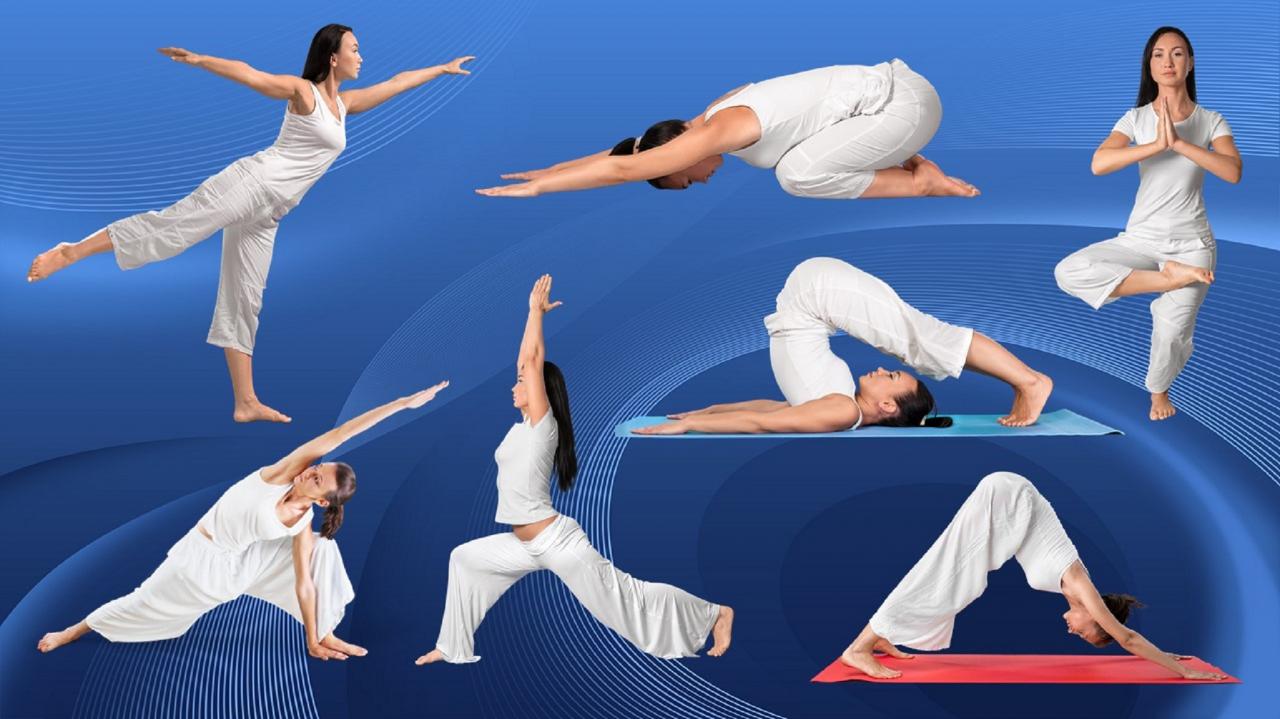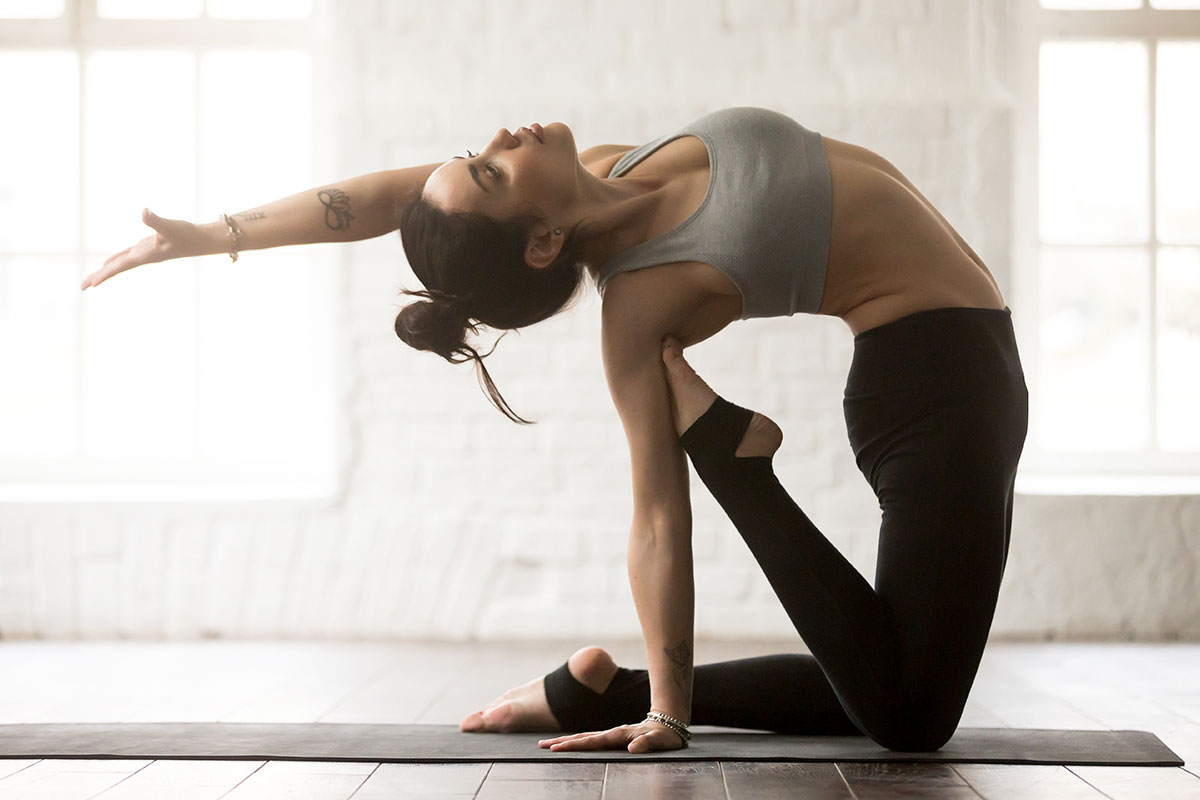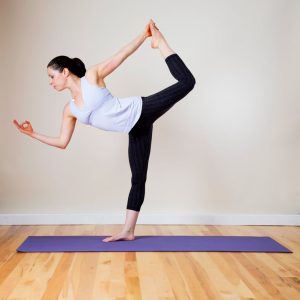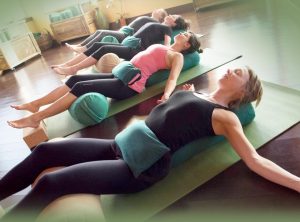
The Role of Mindfulness and Meditation

Mindfulness and meditation significantly enhance the Hatha Yoga experience, moving it beyond mere physical postures to a deeper practice of self-awareness and inner peace. By cultivating present moment awareness, practitioners can deepen their connection to their bodies, improve their breath control, and cultivate a greater sense of self-compassion. This holistic approach leads to a more fulfilling and transformative yoga practice.Mindfulness in Hatha Yoga involves paying close attention to the sensations in the body during each asana (pose).
This includes noticing the subtle shifts in muscle tension, the rhythm of the breath, and any emotional or mental states arising. This heightened awareness allows for a more precise and effective alignment in poses, preventing injury and maximizing the benefits of each stretch. Furthermore, mindful awareness during transitions between poses promotes fluidity and grace in the practice.
Mindfulness’s Enhancement of Hatha Yoga
Mindful attention during Hatha Yoga practice fosters a deeper understanding of the body’s capabilities and limitations. By observing sensations without judgment, practitioners learn to listen to their bodies’ signals, preventing overexertion and promoting sustainable practice. This attentive approach encourages self-acceptance and reduces the pressure to achieve perfect poses, fostering a more compassionate and enjoyable experience. Practitioners find themselves more attuned to their own physical and emotional needs, leading to a more personalized and effective yoga journey.
Meditation Techniques Complementing Hatha Yoga
Meditation techniques are valuable complements to Hatha Yoga, deepening the practice’s benefits and extending its impact beyond the mat. Various meditation practices, such as breath awareness meditation (pranayama), loving-kindness meditation (metta bhavana), and body scan meditation, can enhance the focus, calmness, and self-awareness cultivated through physical asanas. The integration of these practices promotes a holistic well-being, addressing not just the physical body but also the mental and emotional aspects of the individual.
Types of Meditation Suitable for Hatha Yoga Practitioners
Several meditation styles align well with the principles of Hatha Yoga. Breath awareness meditation, focusing on the natural rhythm of the breath, directly complements the breath-centered nature of Hatha Yoga. Body scan meditation, systematically bringing awareness to different parts of the body, enhances body awareness and sensitivity, crucial for proper alignment in asanas. Loving-kindness meditation cultivates self-compassion and acceptance, beneficial for navigating challenges in the practice and fostering a positive self-image.
Each of these styles offers unique benefits, and practitioners may find it beneficial to explore different techniques to discover what resonates most with their individual needs.
Guided Meditation for Hatha Yoga Practitioners
Find a comfortable seated or lying position. Close your eyes gently. Bring your awareness to your breath, noticing the natural rise and fall of your chest or abdomen. With each inhale, feel a sense of expansion, and with each exhale, feel a sense of release. Now, bring your awareness to your body, starting with your toes. Notice any sensations—tingling, warmth, coolness, or pressure. Acknowledge these sensations without judgment. Slowly move your awareness up your body, through your feet, ankles, calves, knees, thighs, hips, and so on, until you reach the top of your head. As you bring awareness to each body part, visualize a gentle, healing light filling that area. Continue this process for several minutes, allowing yourself to fully relax and connect with your body. When you are ready, gently bring your awareness back to your breath, and then to the sounds in the room. Slowly open your eyes, carrying this sense of peace and awareness with you throughout your day.
Hatha Yoga Styles and Variations

Hatha yoga, the foundation of many modern yoga styles, encompasses a broad range of practices focusing on physical postures (asanas) and breathing techniques (pranayama). While the core principles remain consistent, different styles emphasize specific aspects, leading to a diverse spectrum of approaches suitable for various needs and experience levels. Understanding these variations allows practitioners to choose a style that best aligns with their goals and physical capabilities.
The variations in Hatha yoga are numerous, each offering a unique pathway to physical and mental well-being. These differences are not simply stylistic; they reflect differing philosophies, teaching methodologies, and intended outcomes. Some styles prioritize strength and flexibility, others focus on alignment and precision, and still others emphasize the meditative aspects of the practice. This exploration will delve into a few prominent examples to highlight these key distinctions.
Iyengar Yoga and Vinyasa Yoga: A Comparison
Iyengar Yoga and Vinyasa Yoga represent contrasting approaches within the Hatha yoga umbrella. Iyengar Yoga, developed by B.K.S. Iyengar, emphasizes precise alignment and the use of props (blocks, straps, blankets) to support the body and deepen the asanas. Vinyasa Yoga, on the other hand, is a more dynamic and flowing style, linking postures together in a continuous sequence, often synchronized with the breath.
The fundamental difference lies in their approach to movement and the emphasis placed on specific aspects of the practice.
The key distinction lies in the pace and intensity. Iyengar Yoga is slower paced, with a strong focus on holding poses accurately for extended periods. This meticulous approach aims to cultivate strength, stability, and a profound understanding of the body’s alignment. Vinyasa Yoga, conversely, is characterized by a more rapid flow of movement, transitioning smoothly between poses. This dynamic approach enhances cardiovascular fitness, builds muscular endurance, and promotes a sense of fluidity and grace.
Characteristics of Iyengar and Vinyasa Yoga
The following points summarize the defining characteristics of each style, allowing for a clearer understanding of their individual strengths and suitability for different practitioners.
- Iyengar Yoga:
- Emphasis on precise alignment and anatomical detail.
- Extended holds in each posture.
- Extensive use of props (blocks, straps, blankets) for support and modification.
- Slower pace, suitable for all levels with modifications.
- Focus on building strength, stability, and body awareness.
- Vinyasa Yoga:
- Dynamic and flowing sequences of postures.
- Synchronization of movement with breath.
- Higher intensity, building cardiovascular fitness and muscular endurance.
- Emphasis on building strength and flexibility through movement.
- Varied levels of intensity depending on the class and instructor.

